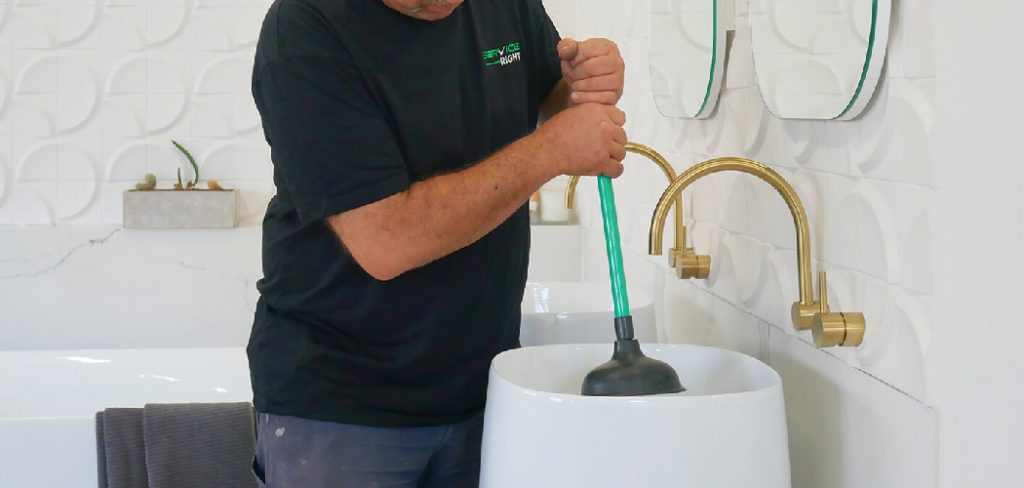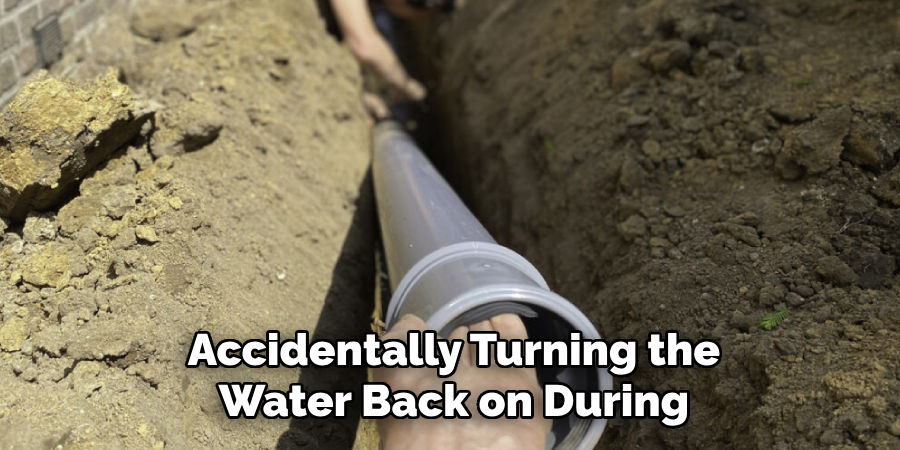Sewer backups can be a frustrating and unpleasant issue for homeowners. They occur when wastewater that should flow away from your home instead accumulates and backs up into your plumbing fixtures. This problem can lead to unsanitary conditions, unpleasant odors, and even property damage if not addressed promptly. Understanding the causes of sewer backups and how to fix them is essential for maintaining a safe and functional plumbing system.

In this article on how to fix sewer backup, we will discuss the common causes of sewer backups and how to identify if you have one. We will also provide step-by-step instructions on how to fix a sewer backup and offer tips for preventing future occurrences.
Common Causes of Sewer Backup
Sewer backups can occur due to various reasons, including:
- Blocked or damaged sewer lines
- Tree roots infiltrating the pipes
- Heavy rainfall or flooding overwhelms the system
- Aging infrastructure and inadequate maintenance
It’s essential to identify the root cause of a sewer backup to address it effectively. In some cases, you may need professional help from a plumber or sewer specialist to fix the issue.
Identifying a Sewer Backup
It’s important to recognize the signs of a sewer backup early on to prevent further damage and contamination. Some common indicators include:
- Slow draining or gurgling sounds in drains
- Strong, foul odors coming from plumbing fixtures
- Water or sewage backing up into sinks, toilets, or tubs
If you notice any of these signs, it’s best to act quickly and try to fix the problem yourself or call a professional for assistance.
8 Step-by-step Guidelines on How to Fix Sewer Backup
Step 1: Shut Off the Main Water Supply
The first step in addressing a sewer backup is to shut off the main water supply to your home. This will prevent any additional water from flowing into the plumbing system and making the problem worse. Locate the main shut-off valve, typically found in the basement, garage, or near the water meter, and turn it off completely.
By stopping the flow of water, you reduce the risk of further backups and limit potential damage to your property. Remember to inform everyone in the household of this step to avoid anyone accidentally turning the water back on during the process.

Step 2: Open Windows and Doors
Once the water supply is shut off, it’s important to ensure proper ventilation in your home. Open windows and doors to allow fresh air to circulate, helping to reduce any unpleasant odors caused by the sewer backup. Proper ventilation will also help to dissipate any harmful gases, such as methane or hydrogen sulfide, that may be present in the affected area.
This step is especially crucial if the backup has impacted multiple areas of your home. By improving airflow, you create a safer and more comfortable environment as you work on resolving the issue.
Step 3: Identify the Cause of the Backup
Before attempting to fix a sewer backup, it’s important to understand why it occurred. This will help determine if you can address the issue on your own or if you need professional assistance.
If the cause is a blocked or damaged sewer line, you may need to call a plumber or sewer specialist for help. However, if the issue is due to items being flushed down the toilet, such as paper towels or sanitary products, you may be able to resolve it yourself.
Step 4: Locate and Clear Blocked Drain Pipes
Once you’ve identified the cause of the backup, the next step is to locate and clear any blocked drain pipes. Start by inspecting the drains closest to the backup, such as sinks, toilets, or tubs, to locate the blockage. Use a plunger to apply pressure and attempt to dislodge the obstruction. For more stubborn clogs, you may need to use a drain snake or auger to break up and remove the debris causing the blockage.

Be sure to use the appropriate tools to avoid damaging your pipes. For outdoor sewer line issues, check the cleanout pipe – a capped pipe that allows access to the sewer line – and consider using a specialized plumbing tool or hose attachment to clear the blockage. If you’re unable to clear the pipes on your own or if the blockage persists, it may be time to contact a professional plumber for assistance.
Step 5: Flush the Drain Pipes
After removing the blockage, it’s important to flush the drain pipes thoroughly with hot water. This will help remove any remaining debris and prevent future clogs from forming. If you have a septic system, avoid using harsh chemicals when flushing, as they can harm the bacteria responsible for breaking down waste in your tank.
You can also add natural drain cleaners, such as a mixture of baking soda and vinegar or enzymatic cleaners, to help maintain the health of your pipes and prevent future backups.
Step 6: Clean and Disinfect Affected Areas
Once the blockage is cleared and the pipes are flushed, it’s important to thoroughly clean and disinfect all areas affected by the sewer backup. Start by removing any standing water using a wet/dry vacuum or a pump, if necessary. Be sure to wear protective gear, such as gloves, boots, and a mask, to prevent exposure to harmful bacteria or contaminants.
After removing the water, clean surfaces with soap and warm water to remove dirt and grime. Then, use a disinfectant, such as bleach diluted in water (1 cup of bleach per gallon of water), to sanitize all affected surfaces. Pay special attention to areas like floors, walls, and any materials that come in contact with the sewage. Discard items that cannot be adequately cleaned, such as carpets, rugs, or upholstered furniture, to prevent mold growth and health hazards.

Step 7: Restore Water Supply and Test Drains
Once the affected areas are cleaned and disinfected, it’s time to restore the water supply to your home. Before turning on the main valve, be sure to check that all drains are clear by running hot water down them for a few minutes. This will help remove any remaining debris and ensure that the blockage is fully cleared.
After testing each drain, turn on the main water supply and check for any leaks or issues with your plumbing system. If everything appears to be in working order, you can resume normal use of your home’s plumbing fixtures.
Step 8: Take Preventative Measures
There are several preventative measures you can take to avoid future sewer backups. These include:
- Properly disposing of waste and avoiding flushing items that can clog pipes, such as paper towels, wipes, or feminine products.
- Regularly maintain your plumbing system by scheduling professional inspections and cleaning to catch any issues before they become larger problems.
- Installing backwater valves or check valves to prevent sewage from flowing back into your home during heavy rain or flooding events.
By following these steps on how to fix sewer backup and taking preventative measures, you can reduce the risk of experiencing a sewer backup in your home.
Frequently Asked Questions
Q1: Can I Use Chemical Drain Cleaners to Unclog a Sewer Backup?
A1: It is not recommended to use harsh chemicals in your drains, especially if you have a septic system. These chemicals can harm the beneficial bacteria in your septic tank and cause more harm than good. It’s best to use natural cleaners or consult a professional plumber for help.
Q2: How Can I Prevent Future Sewer Backups?
A2: To prevent future sewer backups, make sure to properly dispose of waste and schedule regular maintenance for your plumbing system. You can also install backwater valves or check valves as an additional preventative measure. If you live in an area prone to heavy rain or flooding, it’s important to be aware of the potential for sewer backups and take extra precautions during these events.
Q3: What Should I Do if the Backup Doesn’t Clear After Trying These Steps?
A3: If you are unable to clear the backup on your own or if it persists after attempting these steps, it’s best to contact a professional plumber for assistance. They will have the proper tools and expertise to address the issue and prevent further damage or health hazards. So, don’t hesitate to call for help if needed!
Q4: Is Professional Help Necessary for Every Sewer Backup?
A4: No, you may be able to resolve some sewer backups on your own, depending on the cause of the issue. If you are unsure or uncomfortable attempting to fix it yourself, it’s always best to consult a professional for advice and assistance. This can prevent further damage and ensure the issue is properly resolved.

Conclusion
Dealing with a sewer backup can be a daunting and unpleasant experience, but taking prompt and effective action can minimize damage and protect your home. By following the outlined steps on how to fix sewer backup—such as identifying the blockage, using the proper tools, and thoroughly cleaning affected areas—you can address the issue in a safe and efficient manner.
Additionally, implementing preventative measures and scheduling regular maintenance can greatly reduce the likelihood of future sewer backups. While some situations may require professional assistance, being informed and prepared empowers you to protect your home and maintain a healthy plumbing system. Remember, prevention is always better than repair, so take the necessary steps to keep your system functioning smoothly.
About the Author
Adrian Green is a passionate woodworking enthusiast who has dedicated his life to the craft of woodworking. From his early days working alongside his father in the family woodworking shop, Adrian has honed his skills and developed a deep love for creating beautiful, functional pieces with his hands. As the voice behind The Woodenify Blog, he shares his knowledge, tips, and inspiration with fellow woodworkers of all skill levels, helping them build confidence in their abilities while learning new techniques.
Professional Focus
- Specializes in DIY woodworking projects, from furniture making to home décor.
- Provides step-by-step guides, tips, and practical tutorials for woodworkers at any skill level.
- Focused on empowering readers with confidence and knowledge through easy-to-follow instructions and hands-on techniques.
- Passionate about building a community where makers can share, learn, and grow together in the world of woodworking.
Education History
University of Craft and Design – Bachelor of Fine Arts (BFA) in Woodworking and Furniture Design
Woodworking Apprenticeships – Gained extensive hands-on experience through various workshops and mentorships with seasoned craftsmen, refining carpentry and furniture-making skills.
Expertise
- DIY woodworking, carpentry, furniture making, and home décor projects.
- Creating clear, accessible tutorials and guides for beginner to advanced woodworkers.
- Helping readers experience the satisfaction and fulfillment of turning raw materials into stunning finished products.
